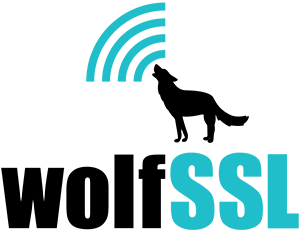wolfSSL’s embedded SSL/TLS library comes with support for many tools and libraries, one of which is curl! In addition to providing support and maintenance for curl, wolfSSL has also integrated the curl library in conjunction with Daniel Stenberg (an original author of curl and one of the founders). With this integration, wolfSSL now provides support and consulting for […]
Read MoreMore TagCategory: Uncategorized
wolfSSL MQTT Sensor Network (MQTT-SN)
The MQTT Sensor Network standard provides a lightweight networking protocol perfectly suited for low cost, low power hardware. The protocol allows using small topic identifiers in place of the full topic name when sending and receiving publish data. The wolfMQTT SN Client implementation is based on the OASIS MQTT-SN v1.2 specification. The SN API is […]
Read MoreMore TagwolfSSL FIPS-Ready
With the recent release of wolfSSL 4.1.0, the wolfSSL team has also updated the wolfSSL FIPS Ready library. This product features new, state of the art concepts and technology. In a single sentence, wolfSSL FIPS Ready is a testable and free to download open source embedded SSL/TLS library with support for FIPS validation, with FIPS enabled […]
Read MoreMore TagwolfCrypt as an engine for OpenSSL
As many people know, the OpenSSL project is struggling with FIPS, and their new FIPS release is not expected until December 2020. The version of OpenSSL that supports FIPS goes into End Of Life and is no longer supported in December of 2019. This means that OpenSSL users will not have a supported package for […]
Read MoreMore TagwolfSSL MQTT Sensor Network (MQTT-SN)
The MQTT Sensor Network standard provides a lightweight networking protocol perfectly suited for low cost, low power hardware. The protocol allows using small topic identifiers in place of the full topic name when sending and receiving publish data. The wolfMQTT SN Client implementation is based on the OASIS MQTT-SN v1.2 specification. The SN API is […]
Read MoreMore TagwolfSSL with #curl and #tiny-curl
wolfSSL’s embedded SSL/TLS library comes with support for many tools and libraries, one of which is curl! In addition to providing support and maintenance for curl, wolfSSL has also integrated the curl library in conjunction with Daniel Stenberg (an original author of curl and one of the founders). With this integration, wolfSSL now provides support and consulting for […]
Read MoreMore TagwolfSSL FIPS-Ready
With the recent release of wolfSSL 4.1.0, the wolfSSL team has also updated the wolfSSL FIPS Ready library. This product features new, state of the art concepts and technology. In a single sentence, wolfSSL FIPS Ready is a testable and free to download open source embedded SSL/TLS library with support for FIPS validation, with FIPS enabled […]
Read MoreMore TagwolfSSL MQTT Sensor Network (MQTT-SN)
The MQTT Sensor Network standard provides a lightweight networking protocol perfectly suited for low cost, low power hardware. The protocol allows using small topic identifiers in place of the full topic name when sending and receiving publish data. The wolfMQTT SN Client implementation is based on the OASIS MQTT-SN v1.2 specification. The SN API is […]
Read MoreMore TagwolfSSL FIPS-Ready
With the recent release of wolfSSL 4.1.0, the wolfSSL team has also updated the wolfSSL FIPS Ready library. This product features new, state of the art concepts and technology. In a single sentence, wolfSSL FIPS Ready is a testable and free to download open source embedded SSL/TLS library with support for FIPS validation, with FIPS enabled […]
Read MoreMore TagwolfCrypt as an engine for OpenSSL
As many people know, the OpenSSL project is struggling with FIPS, and their new FIPS release is not expected until December 2020. The version of OpenSSL that supports FIPS goes into End Of Life and is no longer supported in December of 2019. This means that OpenSSL users will not have a supported package for […]
Read MoreMore Tag
